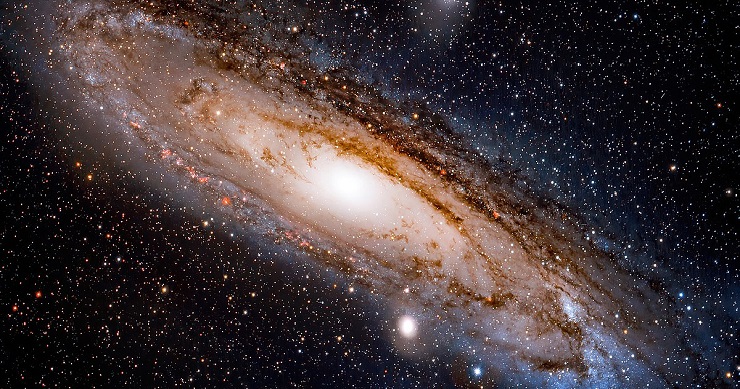Fast Radio Bursts (FRBs), the ultra-short, bright flashes of radio waves that occur daily across the sky, have been a mystery to scientists for over a decade. However, new observations could help astronomers learn more about our galaxy. A team of astronomers from Caltech used an FRB to measure the mass of the Milky Way, and found it to be lighter than expected. They used the Deep Synoptic Array (DSA), an observatory made up of 110 radio antennas, to make more precise measurements of FRBs. The DSA processes 24 gigabytes per second, equivalent to streaming 28,000 Netflix movies simultaneously. In its first year of operation, the DSA helped discover 30 FRBs with precise locations. These observations not only provide clues about the origins of FRBs, but also reveal invisible matter in the universe. The data showed that the Milky Way consists of less than 10% regular matter and over 90% dark matter, suggesting that our galaxy may have experienced blowouts in the past. The research has been accepted for publication in The Astrophysical Journal.
Key Takeaways:
- Fast Radio Bursts (FRBs), brief but bright flashes of radio waves, are being used to learn more about our galaxy, including the surprising discovery that the Milky Way is lighter than previously thought.
- The Deep Synoptic Array (DSA), an observatory of 110 radio antennas, has been instrumental in detecting and locating FRBs, helping scientists understand their origins and revealing invisible matter in our universe.
- The data from the DSA has shown that our Milky Way has a lower proportion of regular matter and a higher proportion of dark matter than the rest of the universe, suggesting that matter may have been expelled from our galaxy in the past due to certain feedback processes.
“For over a decade now, so-called fast radio bursts (FRBs) have been puzzling scientists. These ultra-short-lived, bright flashes of radio waves across the sky happen all day, but no one yet knows what causes them. Although FRBs are still a mystery, new observations of this strange phenomenon may actually help astronomers learn more about our own galactic neighborhood.”
More details: here


Leave a Reply